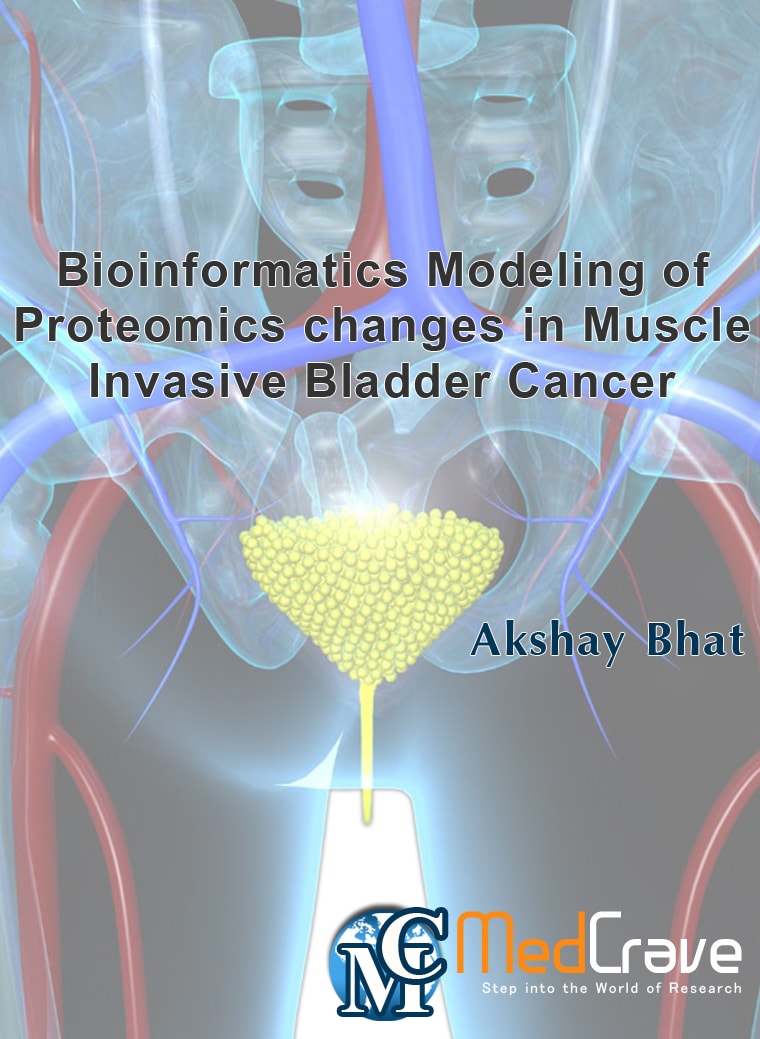eBooks View all | By AtoZ | By category
Bioinformatics Modeling of Proteomics changes in Muscle Invasive Bladder Cancer
By Akshay Bhat
Charite University Berlin, Germany
Published: Aug 25, 2016 | pg. no: 1-16
Abstract: Background: Bladder Cancer (BC) has two distinct phenotypes. Non-muscle invasive BC has good prognosis and is treated by tumor resection and intravesical therapy, whereas muscle-invasive BC has poor prognosis and requires radical cystectomy combined with cisplatin-based chemotherapy. High-throughput sequencing technologies allow identification of individual molecular signatures to characterize the invasive phenotype. Objective: Based on this background the objective of this thesis comprises of three parts. The first aim of the thesis was to characterize muscle-invasive BC on a molecular level by incorporating signatures from literature and omics profiles. The second aim was to evaluate the performance of pathway-enrichment obtained from two bioinformatics tools ImPAla and ClueGO. The third aim shows the use of bioinformatics in order to identify altered pathways relevant to ageing. Materials: Public domain -omics signatures and molecular features associated to muscle-invasive BC were derived from literature mining to provide protein-coding genes. These features were integrated in a protein-interaction network to obtain functional pathways relevant to the phenotype. Pathway-enrichment was performed using ClueGO and ImPAla tools. The resulting pathway terms were filtered according to criterion: multiple comparison corrected p-value <0.05. Results: In the first part of the thesis, the protein-interactions and pathway-enrichment yielded 14 significant pathway terms. Three pathway terms were not previously reported in muscle-invasive BC. The novel disease-associated pathways were regulation of actin-cytoskeleton, neurotrophin-signalling pathway and endocytosis. In the second part, 292 pathways were obtained from ClueGO and 471 pathways from ImPAla software. Comparison of the results obtained by the two applications yielded 152 pathway-terms with the same pathway name. 137 ClueGO pathway-terms were similar to 251 ImPAla pathways. In the last part, the results from a bioinformatics analysis of urinary-peptidomics data discovered a pathway-term “degradation of insulin-like growth factor-binding proteins” that was unique in the context of pathological ageing. Conclusions: The results of this thesis suggest that there is a complex interplay between pathways characterizing the muscle-invasive phenotype of BC. Further experimental validation of the three novel pathways with respect to progression and treatment response is indicated. In addition, the comparison of two prominent pathway enrichment tools ClueGO and ImPAla showed that ClueGO has better performance than ImPAla in pathway-enrichment analysis since the output is less redundant and contains all the biologically significant information. Lastly, molecular pathways enriched in normal and pathological ageing demonstrate that with the help of appropriate peptidomics technologies, urine could be used as a useful source of information in ageing research.
View eBook
